The garden has, as we say, been put in.
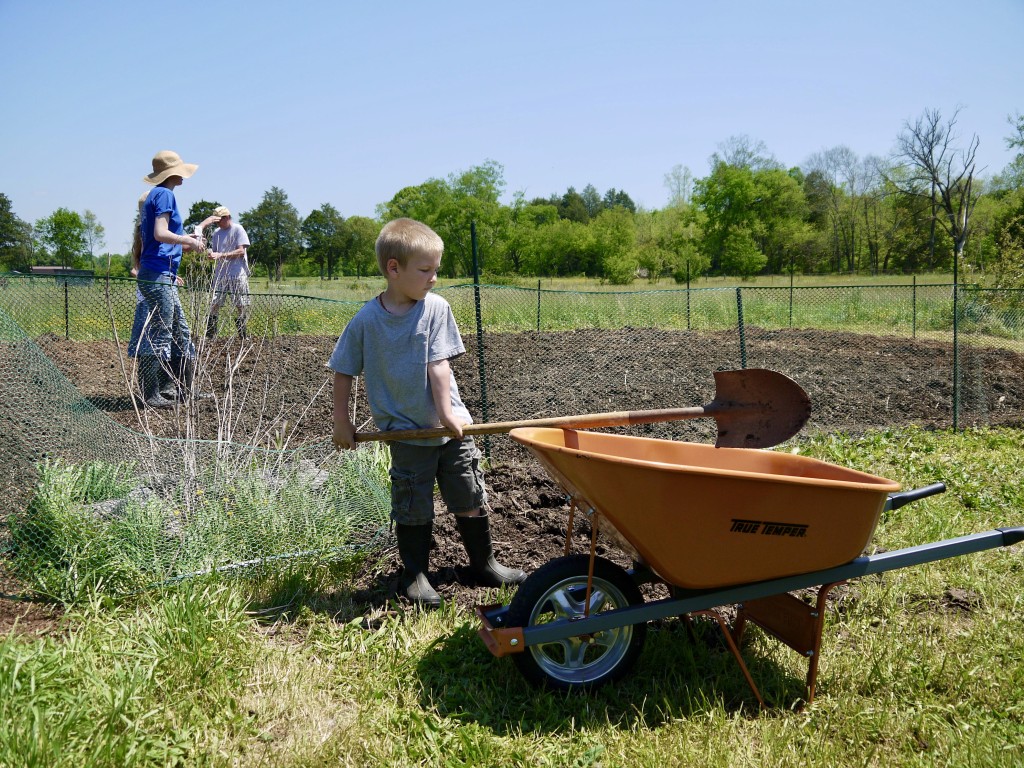
We decided, after prayer and consideration, to be more ambitious this year than we had planned. This was supposed to be the spring of back to back international travel for my husband, the summer where several birds flew from home, the fall of big transitions. We figured a smallish patch, just enough to give us access to our summer favorites, but not much more. Coronavirus has changed some of that.
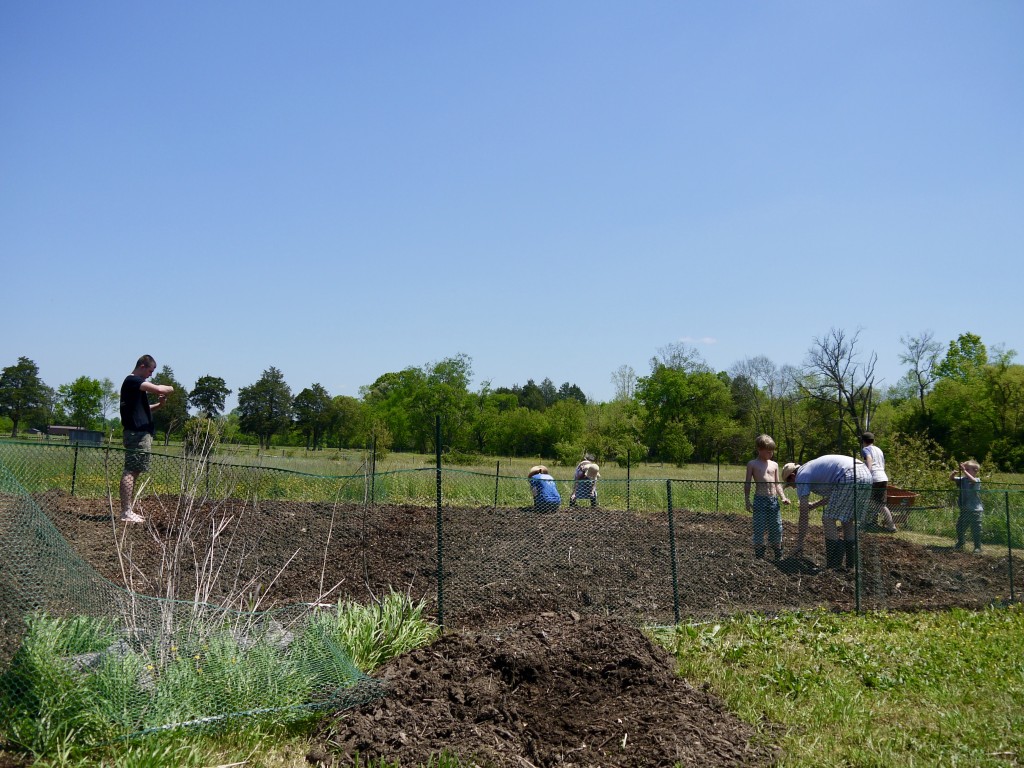
Coronavirus has also changed what we see on the shelves in our local grocery. Always given towards a bent of self-sufficiency, we’re now seeing how so many of our habits once labeled as “why would you do that?” by those less inclined to DIY what comes to their table still have the same deep value they’ve had for centuries.
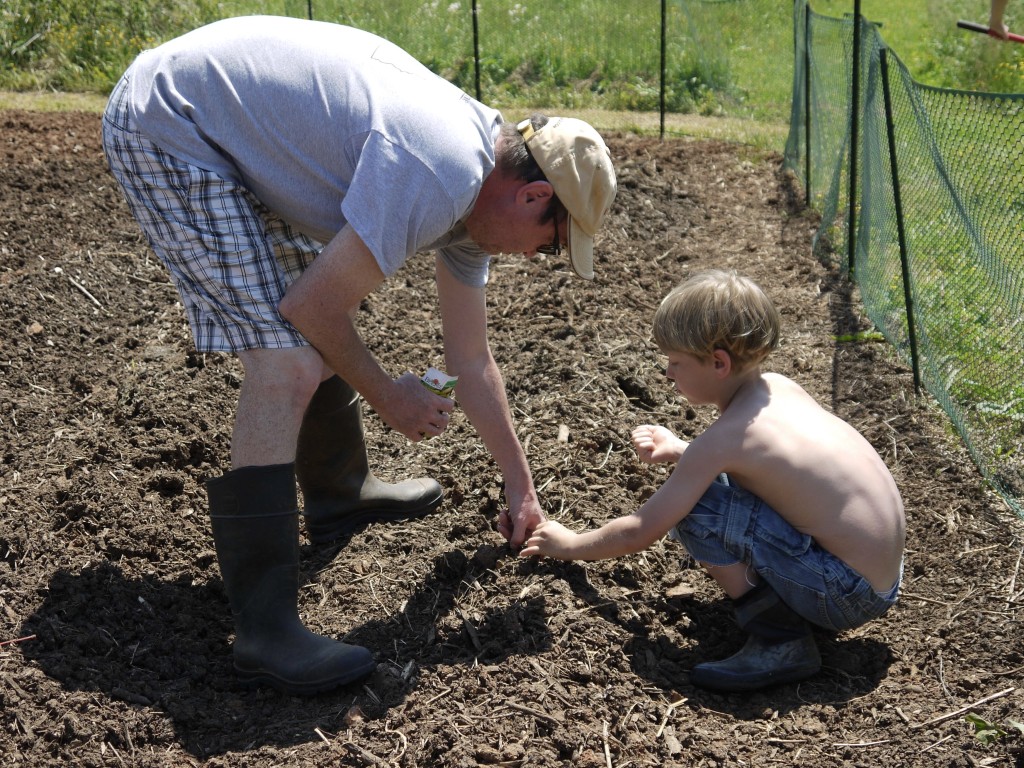
I’ve laughed many times that it only took a global pandemic for my homemaking skills to finally be relevant. Baking bread, cutting up a whole chicken, making your own broth from scraps, even sewing are suddenly less quaint than they used to be.
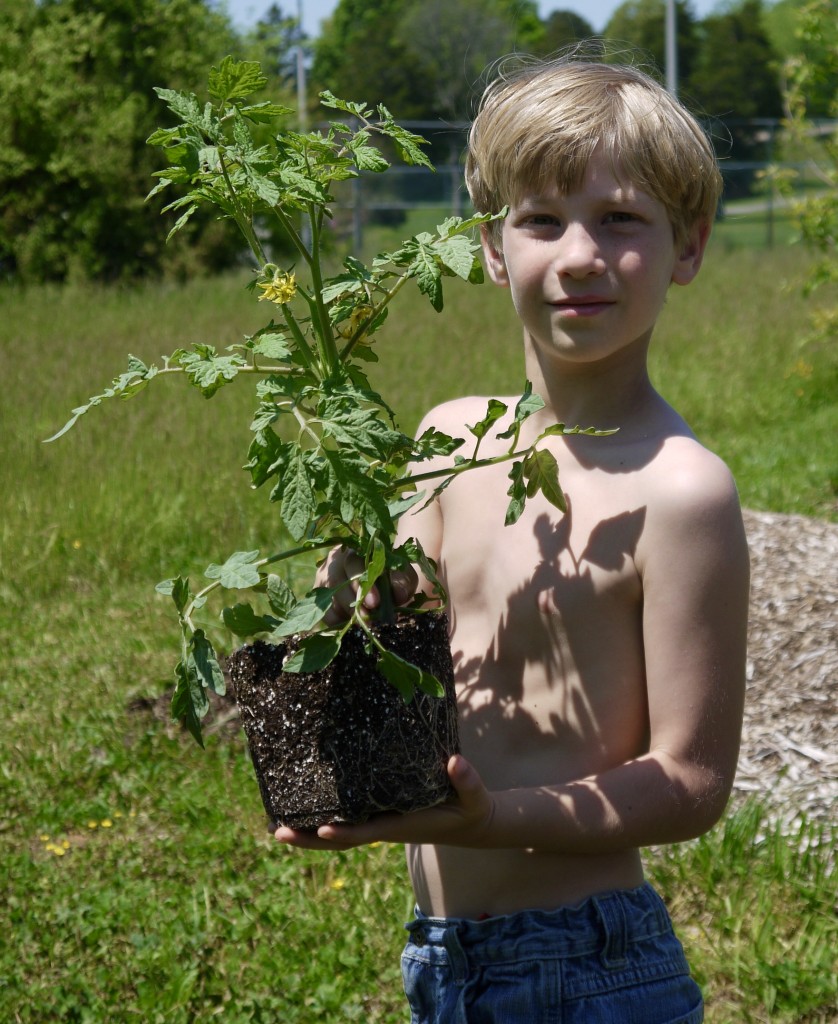
Canning and other methods of food preservation are, I suspect, about to see a bump as well. It must not just be our grocer; I’ve fielded quite a few inquiries from friends wondering how they can act now to have food on hand later and even through the winter. Dry beans are hit or miss in stores. Meat and flour are limited. Yeast has become a unicorn. This is not the norm in this country, and perhaps, we pray, it won’t be for long.
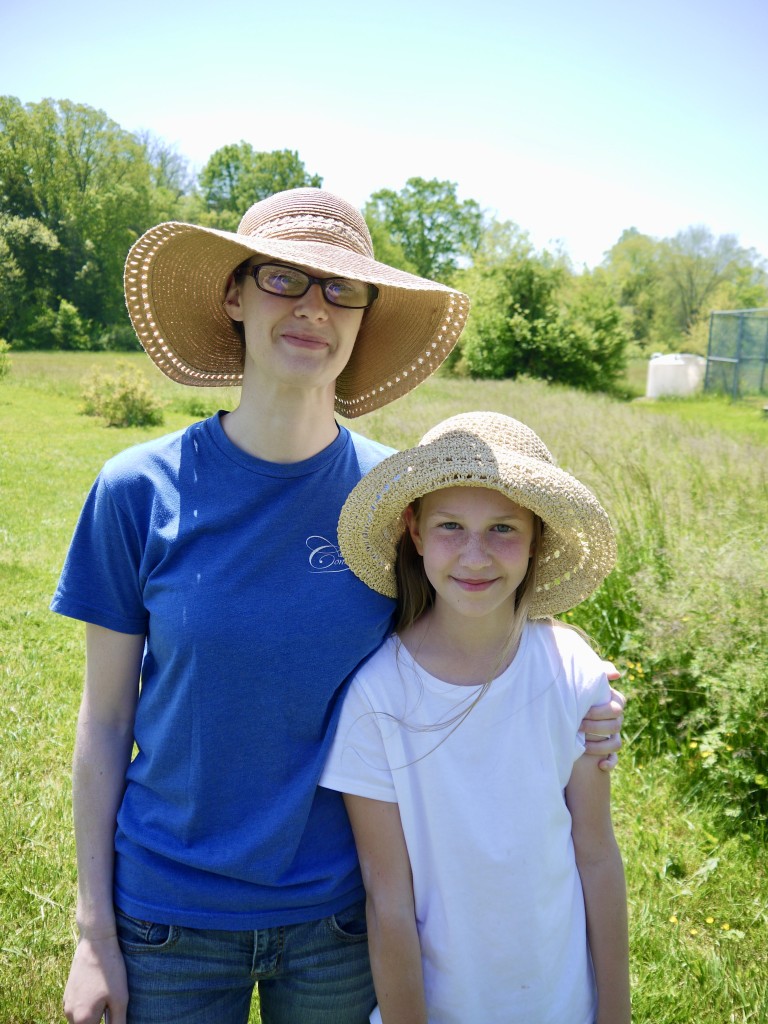
But the virus has rattled enough of our already tenuous faith in the food supply chain that we, like others, decided that this was not the year to throw a few cucumber and zucchini seeds in the ground and call it good.
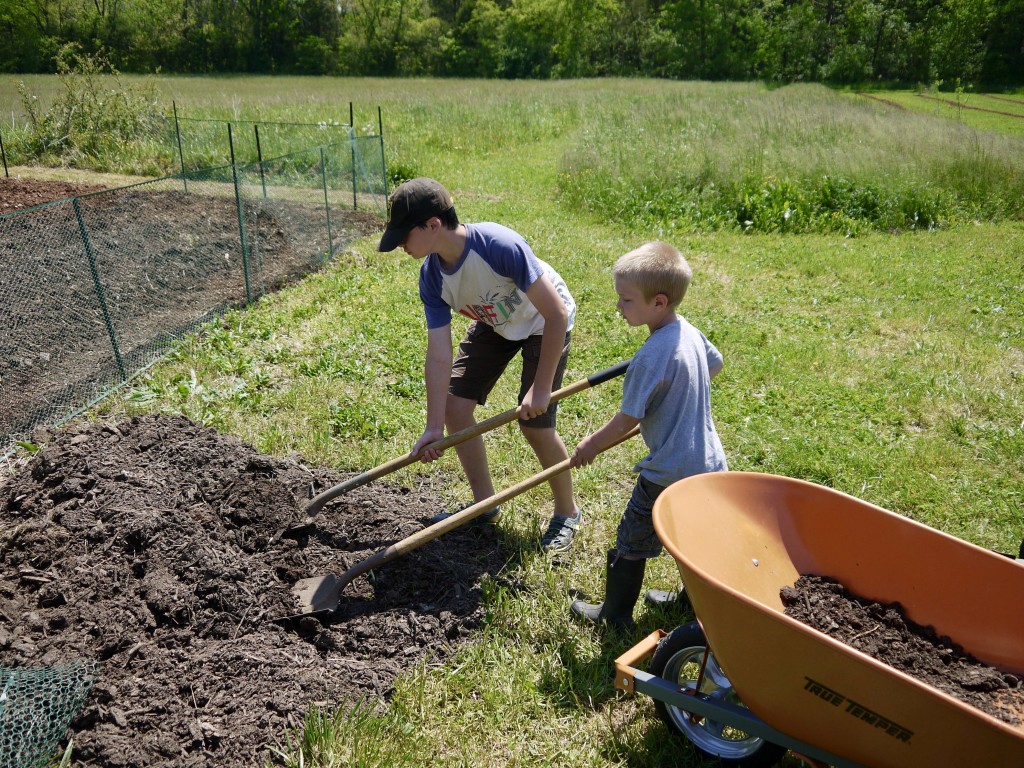
So we put in a bigger garden.
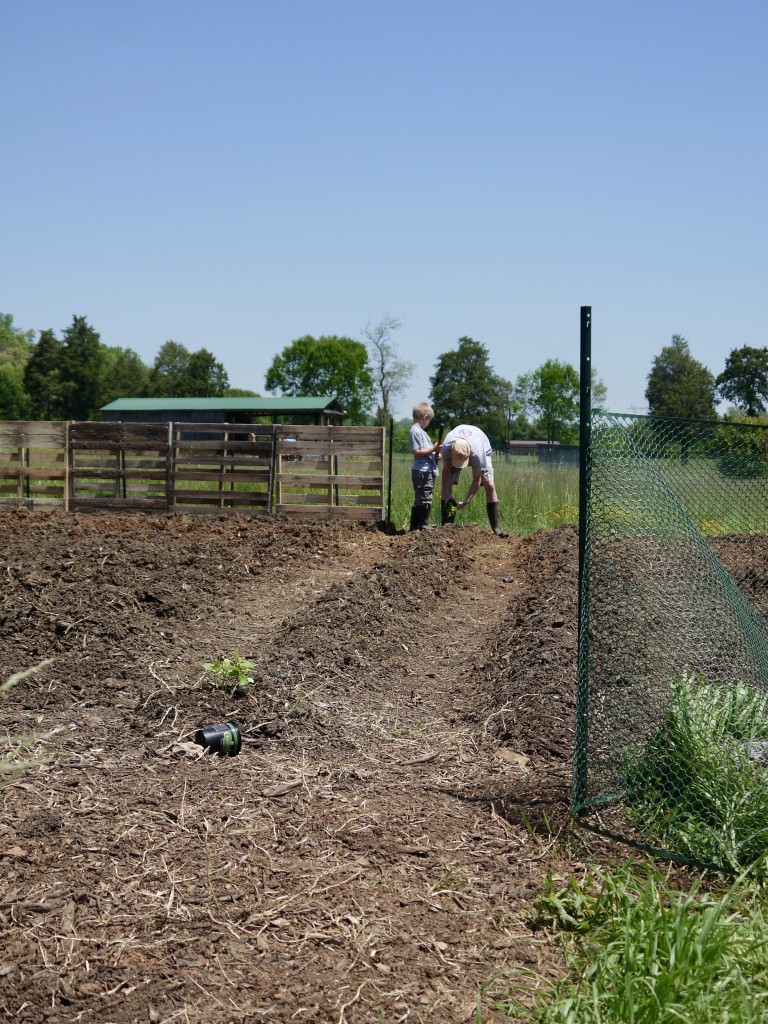
It took us three days. Now, to be fair, that was not three days of all hands on deck work. One day was spent tilling— a one-at-a-time endeavor 90% accomplished through the sweat and muscle of my husband. Our older kids were all in exam-prep mode, and while they helped mow back areas that needed it and Jack even made a pass over a strip sowing area with the tiller, Christopher was the lead on the first stage of the project.
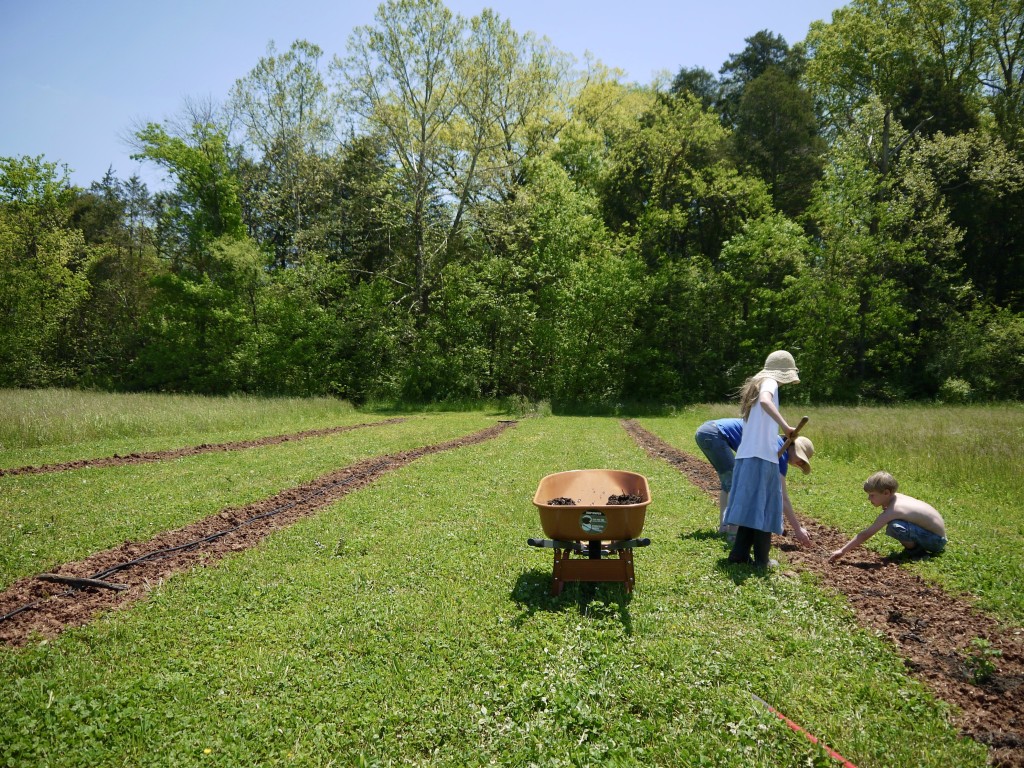
Having chickens gives us access to some of the best compost ever, which we were able to work in to that tilled soil.
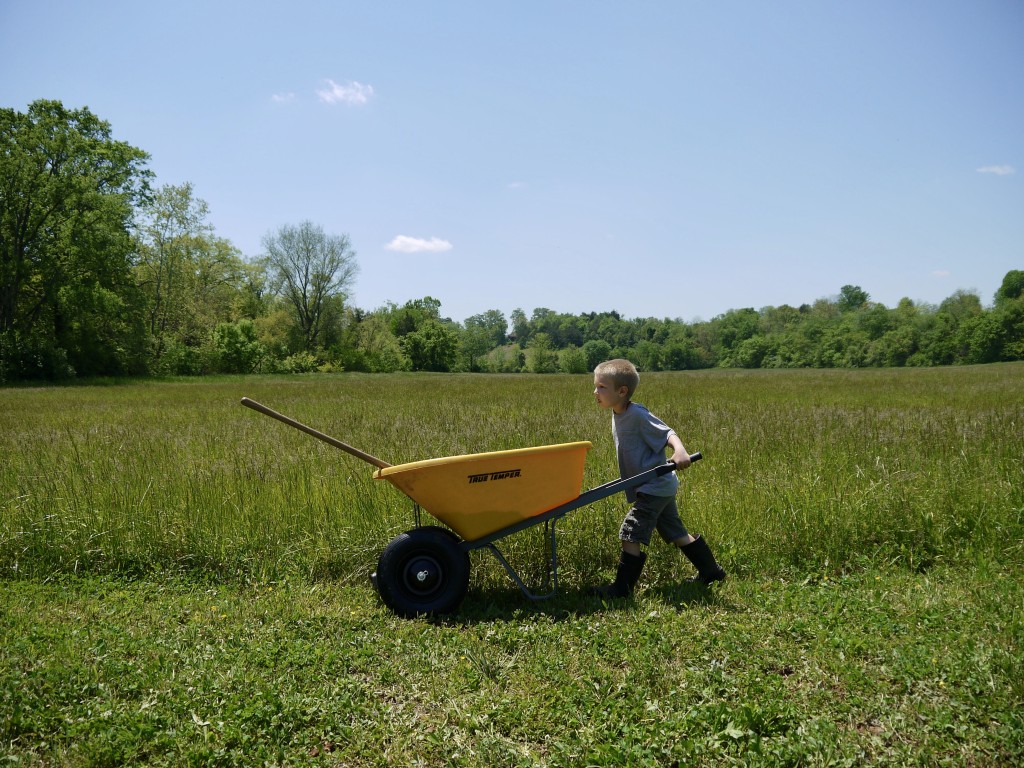
I plotted the planting grid, taking into account cross pollination risks, and beneficial pairings. It’s quite fun, if you’ve never done it. (I also like school planning. This probably says a lot about me!)
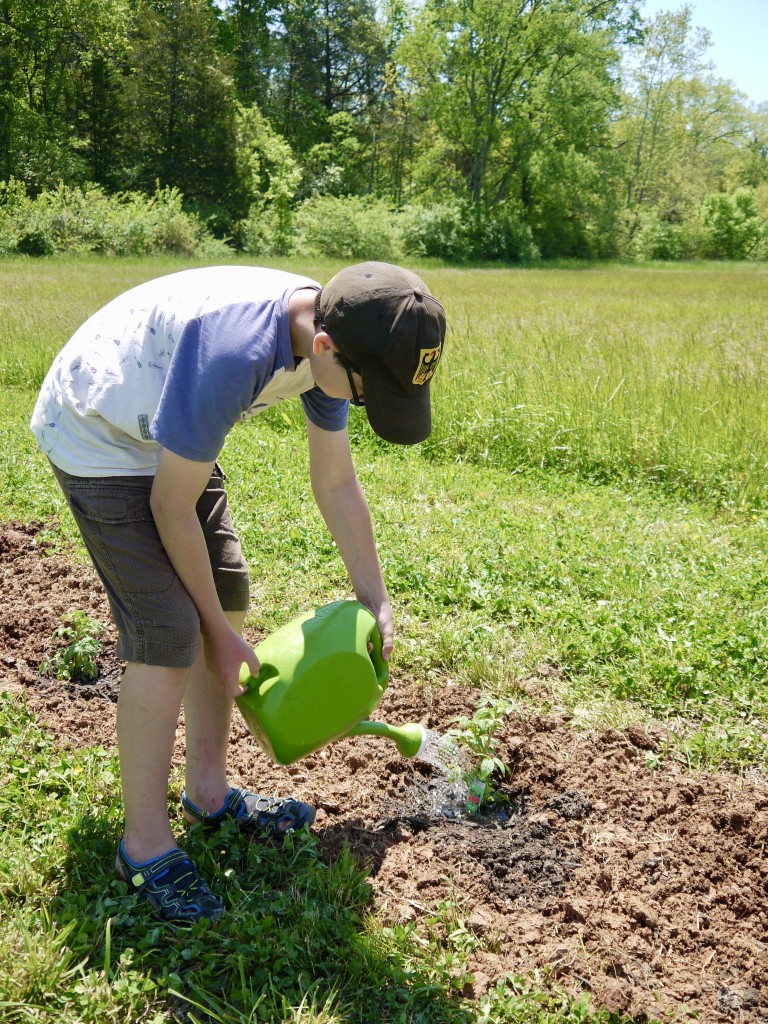
Then we made our rows according to the planting map, and put in the seed.
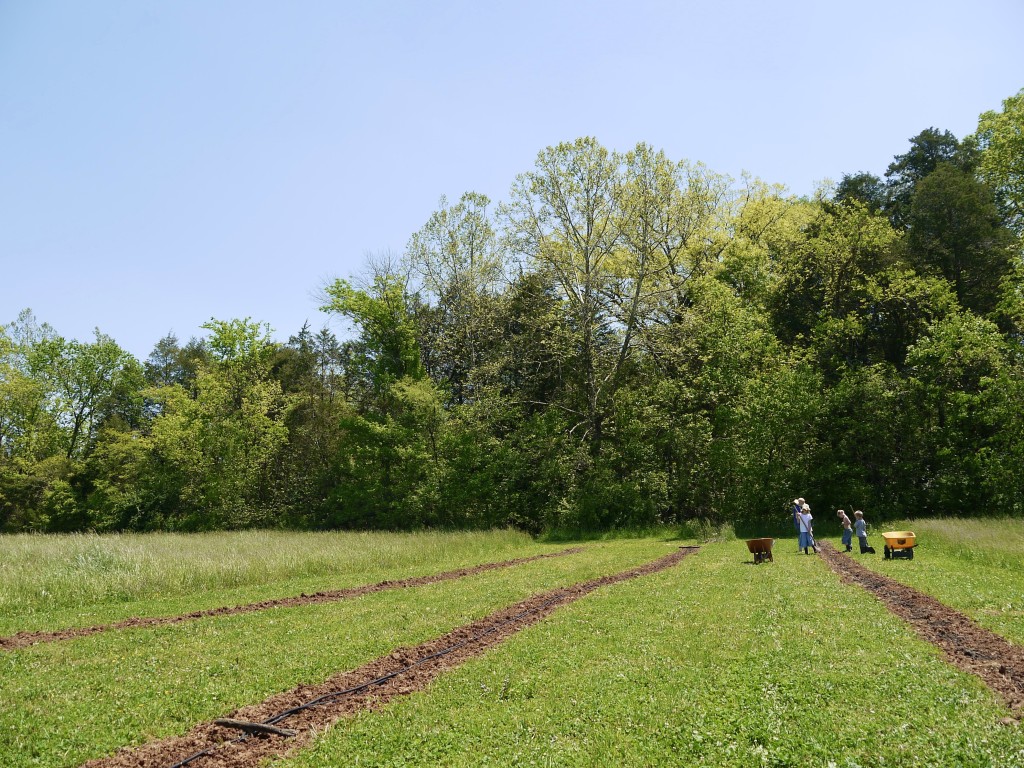
Boy, that all sounds so much easier than it actually is. Hoeing rows is hard work, and spreading compost isn’t a walk in the park either after you’ve been at it a few hours. Thankfully, our kids are all eager workers. The oldest ones helped when they could, and the youngest five put in long days right along side us. They were rewarded by creek breaks throughout the day, and are all already talking about how good it will be to have suppers of nothing but sliced sliced cucumbers, green beans, and grilled squash when the summer days are at their longest.
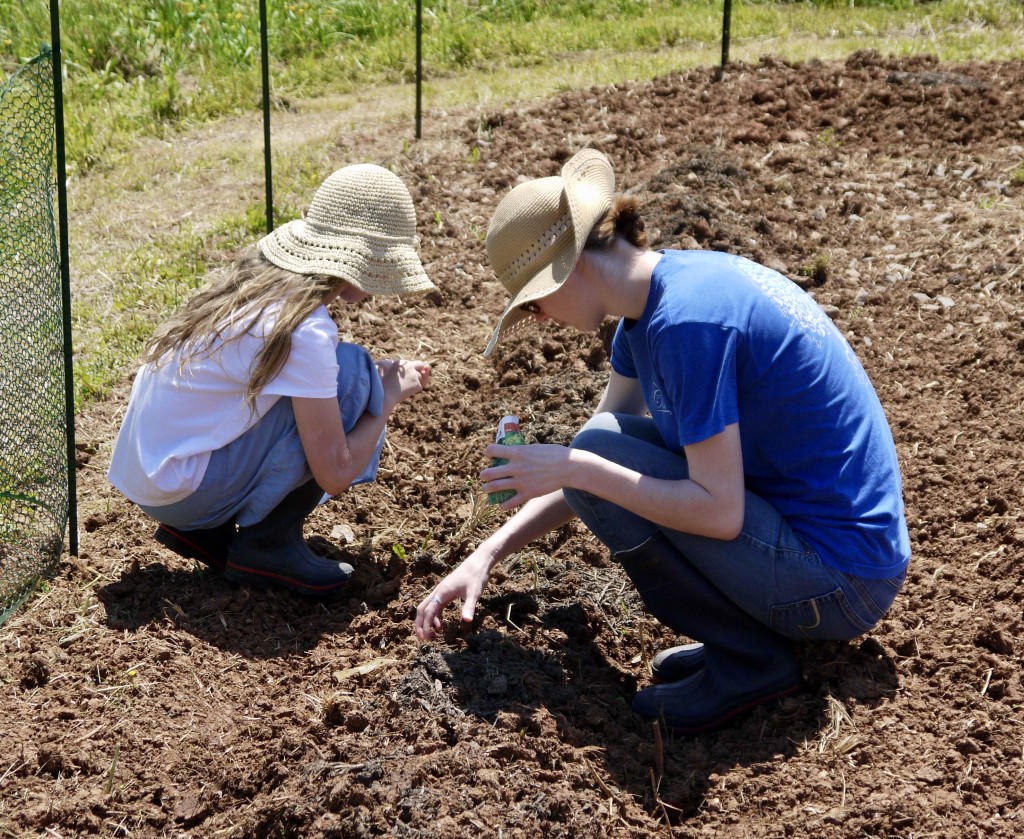
The physical work or putting the garden in is finished. In the lull between— the space now before the real work of weeds and pest control and harvest begins— we will continue to pray. For a bountiful harvest. For the ability to bless others. For the actual need for access to food not to be as great as what we fear. Gardens, like life, are an act of faith. There’s a very real reason why there are so many agrarian references in the Bible; if you’ve ever tried to grow something, you know why. Unless God blesses what you’ve sown, you’ll see no return. The rain won’t come, or the beetles will. The sun won’t shine, or it will shine too much. It’s all in His hands. That’s never more obvious than when you put in a garden.